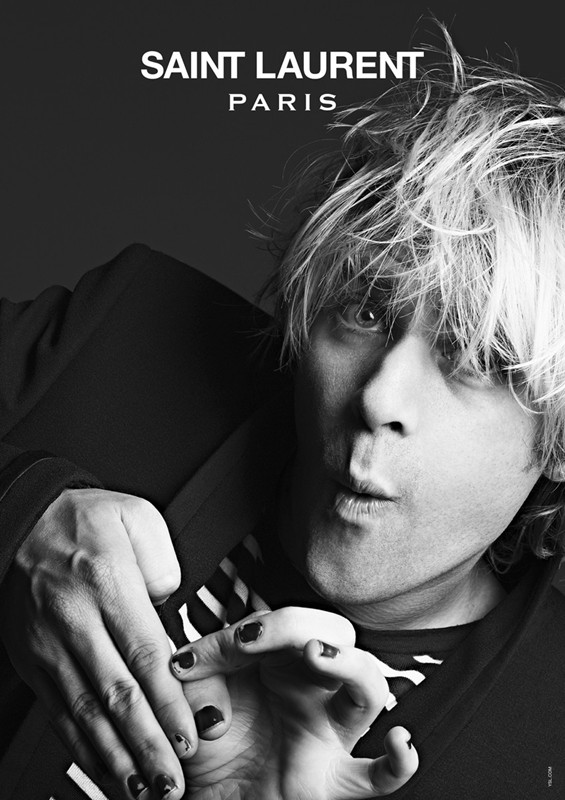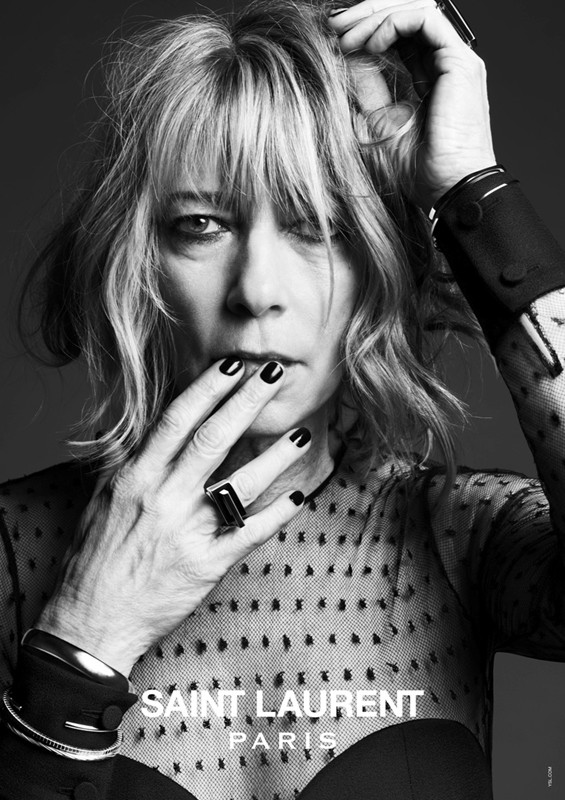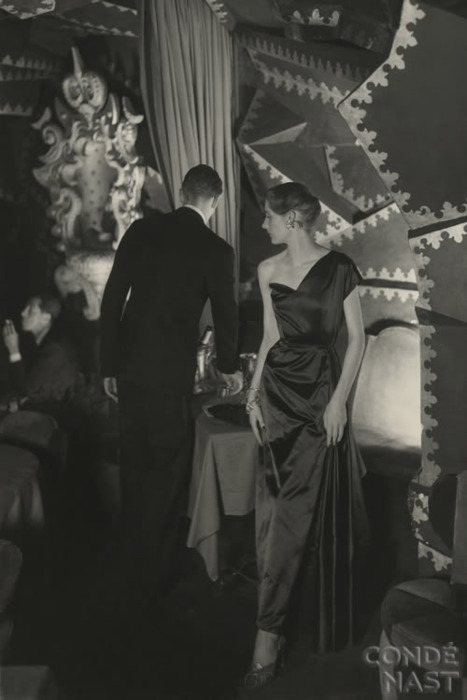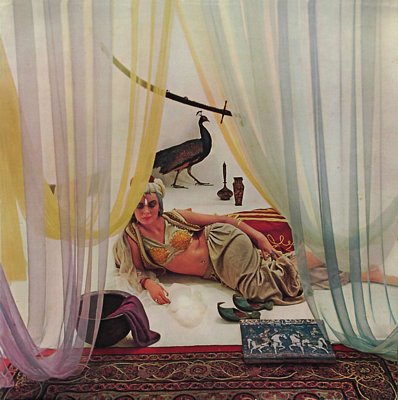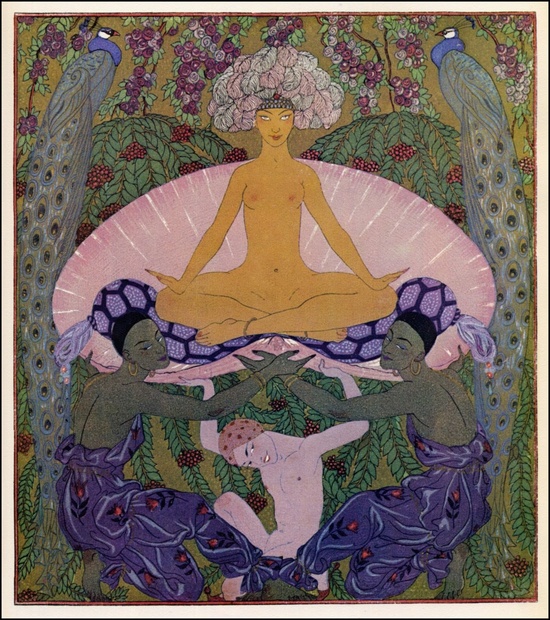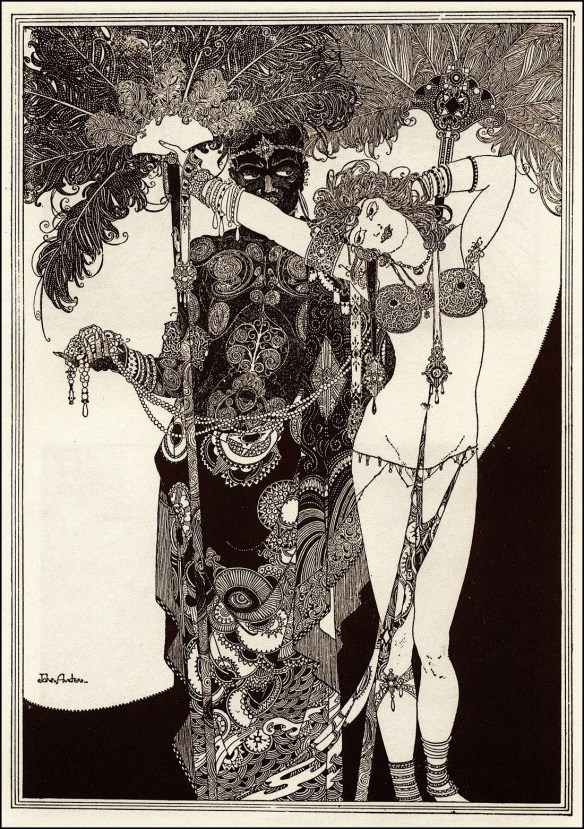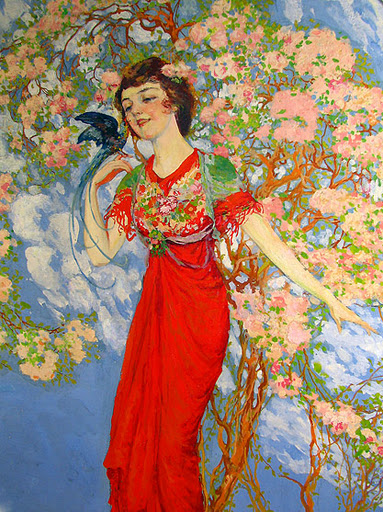 Anonymous Nuremberg (XV cent) : St Sebastian (c. 1440). Bibilothèque Nationale (Paris, France). Woodcut.
Anonymous Nuremberg (XV cent) : St Sebastian (c. 1440). Bibilothèque Nationale (Paris, France). Woodcut.
Saint Sebastian is commonly depicted in art and literature tied to a post or tree and shot with arrows. This is the most common artistic depiction of Sebastian; however, according to legend, he was rescued and healed by Irene of Rome. Sometimes Sebastian is known as the saint who was martyred twice.
The earliest representation of Sebastian is a mosaic in the Basilica of Sant’Apollinare Nuovo (Ravenna, Italy) dated between 527 and 565. The right lateral wall of the basilica contains large mosaics representing a procession of 26 martyrs, led by Saint Martin and including Sebastian. The martyrs are represented in Byzantine style, lacking any individuality, and have all identical expressions.
As protector of potential plague victims (a connection popularized by the Golden Legend) and soldiers, Sebastian occupied an important place in the popular medieval mind. He was among the most frequently depicted of all saints by Late Gothic and Renaissance artists, in the period after the Black Death. The opportunity to show a semi-nude male, often in a contorted pose, also made Sebastian a favourite subject.
 His shooting with arrows was the subject of the largest engraving by the Master of the Playing Cards in the 1430s, when there were few other current subjects with male nudes other than Christ.
His shooting with arrows was the subject of the largest engraving by the Master of the Playing Cards in the 1430s, when there were few other current subjects with male nudes other than Christ.


 Andrea Mantegna
Andrea Mantegna
It has been suggested that the first picture was made after Mantegna had recovered from the plague in Padua (1456–1457). Probably commissioned by the city’s podestà to celebrate the end of the pestilence, it was finished before the artist left the city for Mantua. According to Battisti, the theme refers to the Book of Revelation. A rider is present in the clouds at the upper left corner (pic. 1). As specified in John’s work, the cloud is white and the rider has a scythe, which he is using to cut the cloud. The rider has been interpreted as Saturn, the Roman-Greek god: in ancient times Saturn was identified with the Time that passed by and all left destroyed behind him.
 Giovanni Bellini (1460-64)
Giovanni Bellini (1460-64)
 Sandro Botticelli (1474)
Sandro Botticelli (1474)



Albretch Dürer

Giovanni Antonio Bazzi “Il Sodoma” (1525)
The saint is ordinarily depicted as a handsome youth pierced by arrows. Predella scenes when required, often depicted his arrest, confrontation with the Emperor, and final beheading. The illustration in the infobox is the Saint Sebastian of Il Sodoma, at the Pitti Palace, Florence.
 Cesare Da Sesto (1523)
Cesare Da Sesto (1523)

El Greco

San Sebastiano curato da un angelo (St Sebastian Healed by an Angel), Giovanni Baglione, c. 1603


 Anton Van Dyck (1621-1627)
Anton Van Dyck (1621-1627)

 Peter Paul Rubens
Peter Paul Rubens

José de Ribera (1651)
 St Sebastien Attended by St Irene, Georges de La Tour, (c. 1649)
St Sebastien Attended by St Irene, Georges de La Tour, (c. 1649)
 Honoré Daumier, 1849-52
Honoré Daumier, 1849-52
A mainly 17th-century subject, though found in predella scenes as early as the 15th century, was St Sebastian tended by St Irene, painted by Georges de La Tour, Trophime Bigot (four times), José de Ribera, Hendrick ter Brugghen and others.
 The Martyrdom of Saint Sebastian, by Ángel Zárraga (1911)
The Martyrdom of Saint Sebastian, by Ángel Zárraga (1911)
This may have been a deliberate attempt by the Church to get away from the single nude subject, which is already recorded in Vasari as sometimes arousing inappropriate thoughts among female churchgoers. The Baroque artists usually treated it as a nocturnal chiaroscuro scene, illuminated by a single candle, torch or lantern, in the style fashionable in the first half of the 17th century. There exist several cycles depicting the life of Saint Sebastian. Among them are the frescos in the “Basilica di San Sebastiano” of Acireale (Italy) with paintings by Pietro Paolo Vasta.
 Antonio Bellucci, c. 1716-8
Antonio Bellucci, c. 1716-8
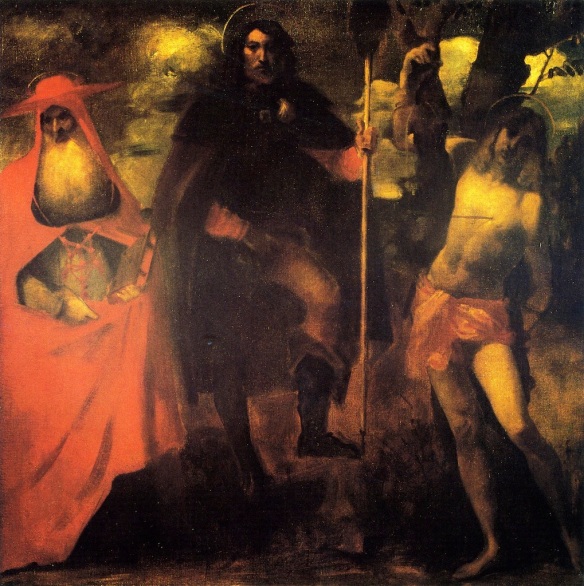 Saint Roch with Saint Jerome and Saint Sebastian (after a picture attributed to Alessandro Oliverio), John Singer Sargent, circa 1880-1881
Saint Roch with Saint Jerome and Saint Sebastian (after a picture attributed to Alessandro Oliverio), John Singer Sargent, circa 1880-1881

 Egon Schiele painted a self-portrait as Saint Sebastian in 1915
Egon Schiele painted a self-portrait as Saint Sebastian in 1915
 During Salvador Dalí’s “Lorca (Federico García Lorca) Period”, he painted Sebastian several times, most notably in his “Neo-Cubist Academy”
During Salvador Dalí’s “Lorca (Federico García Lorca) Period”, he painted Sebastian several times, most notably in his “Neo-Cubist Academy”
 While Lorca was not a practicing Catholic, he was fascinated by Catholic liturgy and ritual, leading him to seek inspiration from religious themes such as the lives of saints which he would have studied while reading The Golden Legend by Jacobus de Vorgine. Sebastian relate to Lorca’s poetics as well as his relationship to Salvador Dalí.
While Lorca was not a practicing Catholic, he was fascinated by Catholic liturgy and ritual, leading him to seek inspiration from religious themes such as the lives of saints which he would have studied while reading The Golden Legend by Jacobus de Vorgine. Sebastian relate to Lorca’s poetics as well as his relationship to Salvador Dalí.
 Gabriele d’Annunzio come S. Sebastiano, A. Salvini. In 1911, the Italian playwright Gabriele d’Annunzio in conjunction with Claude Debussy produced a mystery play on the subject.
Gabriele d’Annunzio come S. Sebastiano, A. Salvini. In 1911, the Italian playwright Gabriele d’Annunzio in conjunction with Claude Debussy produced a mystery play on the subject.
 St. Sebastian with St. Irene and Attendant,Eugène Delacroix, 1858
St. Sebastian with St. Irene and Attendant,Eugène Delacroix, 1858
The American composer Gian Carlo Menotti composed a ballet score for a Ballets Russes production which was first given in 1944. In his novella Death in Venice, Thomas Mann hails the “Sebastian-Figure” as the supreme emblem of Apollonian beauty, that is, the artistry of differentiated forms; beauty as measured by discipline, proportion, and luminous distinctions. This allusion to Saint Sebastian’s suffering, associated with the writerly professionalism of the novella’s protagonist, Gustav Aschenbach, provides a model for the “heroism born of weakness”, which characterizes poise amidst agonizing torment and plain acceptance of one’s fate as, beyond mere patience and passivity, a stylized achievement and artistic triumph.
Sebastian’s death was depicted in the 1949 film Fabiola, in which he was played by Massimo Girotti.

 In 1976, the British director Derek Jarman made his debut film, Sebastiane, which caused controversy in its treatment of the martyr as a homosexual icon. However, as several critics have noted, this has been a subtext of the imagery since the Renaissance.
In 1976, the British director Derek Jarman made his debut film, Sebastiane, which caused controversy in its treatment of the martyr as a homosexual icon. However, as several critics have noted, this has been a subtext of the imagery since the Renaissance.

Also in 1976, a figure of Saint Sebastian appeared throughout the American horror film Carrie, directed by Brian de Palma
 Pietro Vannucci Perugino’s painting (c. 1495) of Saint Sebastian is featured in the movie Wit (Mike Nichols, 2001) starring Emma Thompson. Thompson’s character, as a college student, visits her professor’s office, where an almost life-size painting of Saint Sebastian hangs on the wall. Later, when the main character is a professor herself, diagnosed with cancer, she keeps a small print of this same painting of Saint Sebastian next to her hospital bed. The allusion appears to be to Sebastian’s stoic martyrdom – a role the Thompson character has willingly accepted for the betterment of all mankind. There may be a touch of authorial (or directorial) cynicism in making this “saintly” connection.
Pietro Vannucci Perugino’s painting (c. 1495) of Saint Sebastian is featured in the movie Wit (Mike Nichols, 2001) starring Emma Thompson. Thompson’s character, as a college student, visits her professor’s office, where an almost life-size painting of Saint Sebastian hangs on the wall. Later, when the main character is a professor herself, diagnosed with cancer, she keeps a small print of this same painting of Saint Sebastian next to her hospital bed. The allusion appears to be to Sebastian’s stoic martyrdom – a role the Thompson character has willingly accepted for the betterment of all mankind. There may be a touch of authorial (or directorial) cynicism in making this “saintly” connection.
 Still from R.E.M.’s Losing My Religion (Tarsem Singh, 1991) promotional music video
Still from R.E.M.’s Losing My Religion (Tarsem Singh, 1991) promotional music video
*I will be posting more artistic representations of St Sebastian on The Genealogy of Style´s new Facebook page
https://www.facebook.com/media/set/?set=a.597637210325056.1073741828.597542157001228&type=1&l=9328e23d78
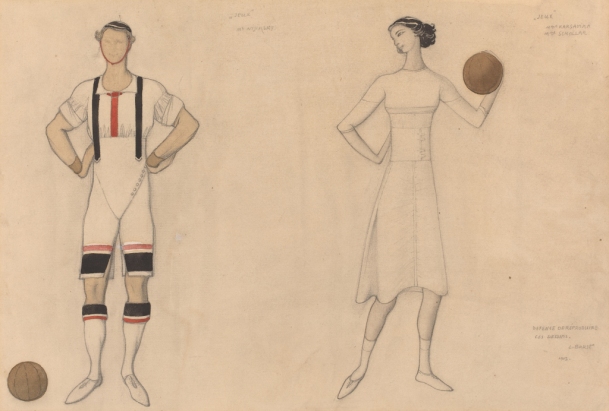 A minimalist, modern rendering by Léon Bakst for Costume Study for Jeux. Watercolor, graphite and black chalk on laid paper. Credit: National Gallery of Art, Washington D.C.
A minimalist, modern rendering by Léon Bakst for Costume Study for Jeux. Watercolor, graphite and black chalk on laid paper. Credit: National Gallery of Art, Washington D.C. Tamara Karsavina, Vaslav Nijinsky and Ludmilla Schollar in Jeux
Tamara Karsavina, Vaslav Nijinsky and Ludmilla Schollar in Jeux




























































